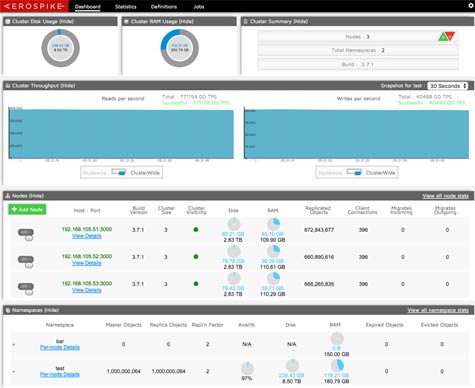2016 Data Analytics Forecast: Top 5 Trends to Watch When it comes to transaction processing, relational databases still rule the enterprise roost. But it’s also clear that a number of NoSQL databases are starting to lay claim to these operations. One of those challengers is Aerospike, which today updated its namesake database to add support […]

2016 Data Analytics Forecast: Top 5 Trends to Watch

When it comes to transaction processing, relational databases still rule the enterprise roost. But it’s also clear that a number of NoSQL databases are starting to lay claim to these operations.
One of those challengers is Aerospike, which today updated its namesake database to add support for geospatial indexing, streamlined list operations that make it possible to change data in a list directly on the server and enhanced stability on clusters running in cloud services such as Amazon Web Services and Google Cloud Compute.
Because Aerospike is based on a key-value store database that runs in memory, Aerospike CTO Brian Bulkowski says, it’s possible for the Aerospike database to assume multiple personalities. That’s critical, says Bulkowski, because developers want to be able to incorporate multiple types of data within the same application. Rather than having to make calls to a separate geospatial database, developers can use the same database to incorporate geospatial data in a transaction application. In fact, Bulkowski says, what makes Aerospike appealing from an IT operations perspective is that transaction applications can now be supported using fewer servers.

Version 3.7 of Aerospike also adds improved statistics for migrations, an option to use local time in log messages, ability to add stop-writes threshold on a per-set basis, an option to include or exclude LDT data in scans, and the ability to dynamically change the unicast heartbeat addresses.
Put it all together and it’s apparent that NoSQL databases are expanding the applications they can support well beyond analytics use cases typically associated with a data warehouse. That doesn’t mean that NoSQL databases will replace traditional relational databases overnight. But it does mean that the number of database options available to support transaction applications that are becoming more complex is expanding rapidly.
MV
Michael Vizard is a seasoned IT journalist, with nearly 30 years of experience writing and editing about enterprise IT issues. He is a contributor to publications including Programmableweb, IT Business Edge, CIOinsight and UBM Tech. He formerly was editorial director for Ziff-Davis Enterprise, where he launched the company’s custom content division, and has also served as editor in chief for CRN and InfoWorld. He also has held editorial positions at PC Week, Computerworld and Digital Review.








